J. Brégains
Analog beamforming using time-modulated arrays with digitally preprocessed rectangular sequences
Jan 28, 2024Abstract:Conventional time-modulated arrays are based on the application of variable-width periodical rectangular pulses (easily implemented with radio frequency switches) to the individual antenna excitations. However, a serious bottleneck arises when the number of exploited harmonic beams increases. In this context, the modest windowing features of the rectangular pulses produce an inflexible and ineffective harmonic beamforming. The use of other pulses, such as sum of weighted cosines, partially solves these issues at the expense of introducing additional non-timing variables. We propose the discrete-time preprocessing of rectangular pulses before being applied to the antenna to accomplish an agile, efficient, and accurate harmonic beamforming, while keeping the simplicity of the hardware structure.
* 4 pages, 6 figures, Published in IEEE Antennas and Wireless Propagation Letters
Time-modulated arrays with Haar wavelets
Jan 28, 2024Abstract:Time-modulated arrays (TMAs) can effectively perform beamsteering over the first positive harmonic pattern by applying progressively delayed versions of stair-step approximations of a sine waveform to the antenna excitations. In this letter, we consider synthesizing such stair-step sine approximations by means of Haar wavelets. Haar functions constitute a complete orthonormal set of rectangular waveforms, which have the ability to represent a given function with a high degree of accuracy using few constituent terms. Hence, when they are applied to the TMA synthesis, employing single-pole double-throw switches, such a feature leads to an excellent rejection level of the undesired harmonics as well as a bandwidth greater than that supported by conventional TMAs with on-off switches.
* 5 pages, 4 figures, Published in IEEE Antennas and Wireless Propagation Letters
Time-modulated multibeam phased arrays with periodic Nyquist pulses
Jan 28, 2024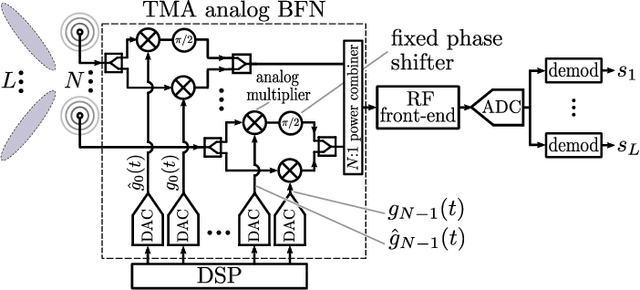
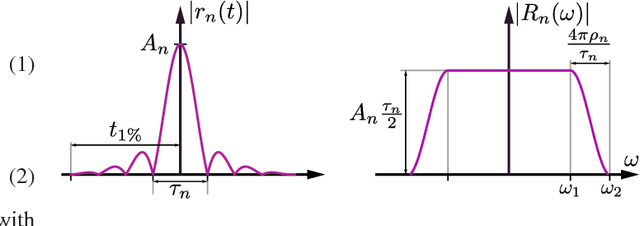
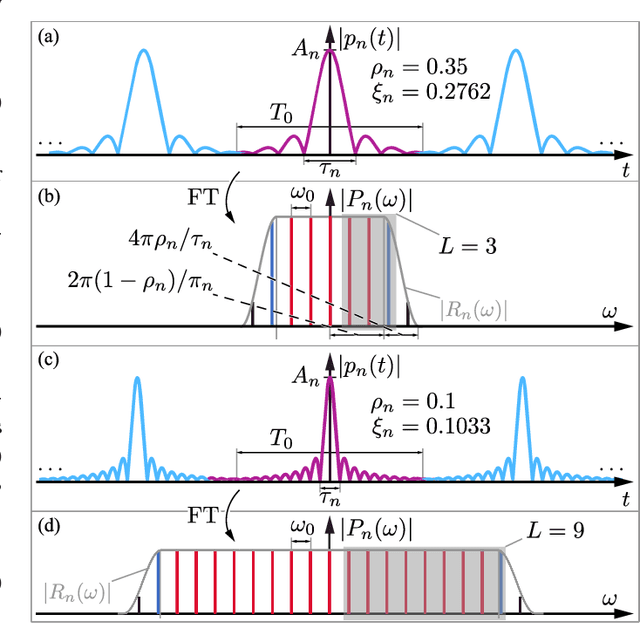
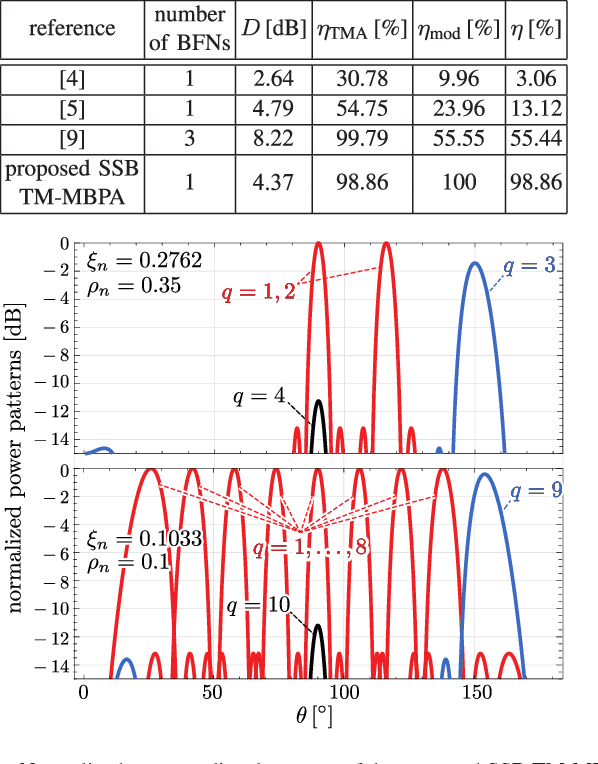
Abstract:We present a single sideband time-modulated multibeam phased array governed by periodic Nyquist pulsed signals. A Nyquist pulse is a physically realizable approach to the ideal sinc function. Hence, its low-pass spectrum suits particularly well for time-modulated arrays (TMAs) to perform harmonic beam steering. Contrarily to switched TMAs and standard solutions based on variable phase shifters, the performance and complexity of the proposed time modulation scheme is rather robust when increasing the number of multibeams.
* 4 pages, 4 figures, Published in IEEE Antennas and Wireless Propagation Letters
Time-modulated phased array controlled with non-ideal bipolar squared periodic sequences
Jan 27, 2024Abstract:Bipolar (+/-1) sequences with no zero state suit particularly well for safeguarding the switched feeding network efficiency when applied to time-modulated arrays (TMAs). During the zero state of a conventional time-modulating sequence, if a given array element is switched off, a certain amount of energy of the transmitted/received signal is wasted. We propose a novel single sideband time-modulated phased array (TMPA) architecture governed by realistic bipolar squared sequences in which the rise/fall time of the switches is considered. By using single-pole dual-throw switches and non-reconfigurable passive devices, the TMPA exploits, exclusively, the first positive harmonic pattern while exhibiting an excellent performance in terms of efficiency and control level of the undesired harmonics without using synthesis optimization algorithms (software simplicity).
* 5 pages, 5 figures, published in IEEE Antennas and Wireless Propagation Letters
Time-modulated array beamforming with periodic stair-step pulses
Jan 27, 2024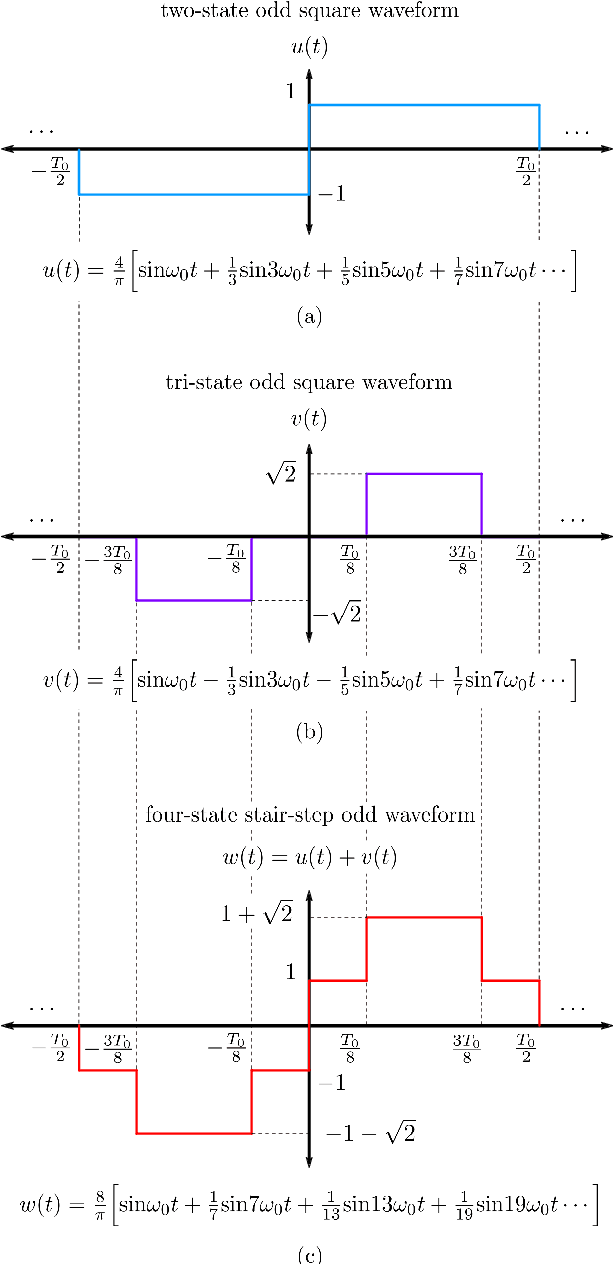
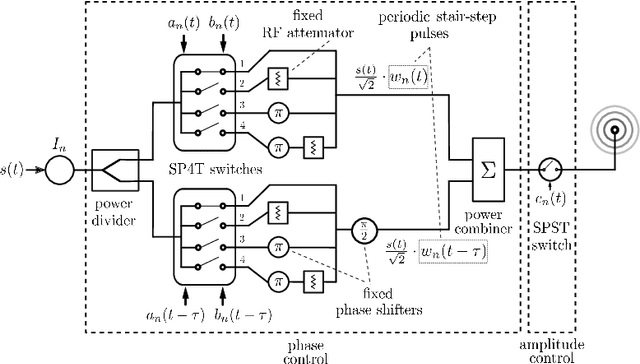
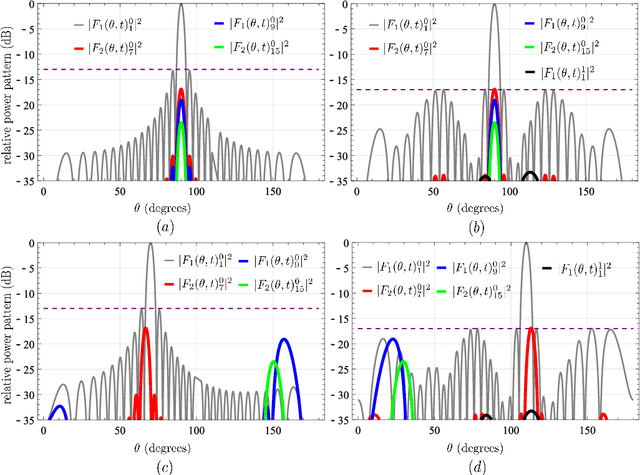

Abstract:Time-modulated arrays (TMAs) are able to improve the side-lobe level of the radiation pattern at the fundamental mode but cannot steer the beam at such a mode towards a given direction. Beam-steering is possible in a TMA, but only at the harmonic patterns and at the expense of a severe TMA efficiency reduction. In this work we propose a TMA approach that simultaneously performs both features over the same beam by using two sets of switches: (1) single-pole four-throw switches to generate periodic stair-step pulses suitable for efficiently synthesizing a uniform steerable beam over the first positive harmonic, and (2) single-pole single-throw switches to reconfigure the side-lobe level of the previous beam. Performance, small size, cost-effectiveness, and performance invariability with the carrier frequency are features that make this TMA approach a competitive solution for analog beamforming. Accordingly, the structure is an attractive proposal for the design of multibeam transceivers.
* 14 pages, 9 figures, published in Signal Processing
 Add to Chrome
Add to Chrome Add to Firefox
Add to Firefox Add to Edge
Add to Edge